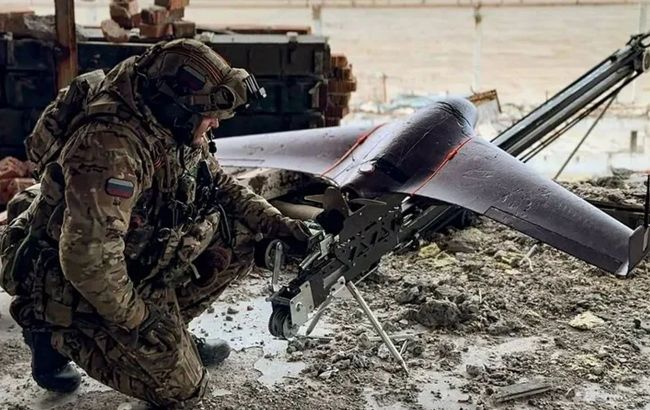Russian Chernika drone attacks Ukraine's Kharkiv for first time: What is known about it
 Illustrative photo: Kharkiv attacked for the first time by a Chernika drone (Russian media)
Illustrative photo: Kharkiv attacked for the first time by a Chernika drone (Russian media)
The Russian army recently used a drone from the Chernika (blueberry) series for the first time to strike the city of Kharkiv. Russia is already producing these drones by the thousands, Defense Express reports.
According to the outlet, drones in this series are produced in two variants: the lighter Chernika-1 and the heavier Chernika-2.
Open sources indicate that Russia has had these drones in its arsenal for quite some time. In March 2024, it was reported that over 7,500 units of the Chernika-1 had been produced, and in April, more than 4,000 units of the Chernika-2 model.
Chernika-1
The Chernika-1 kamikaze drone is a flying wing-type unmanned aerial vehicle made of foam plastic. Its maximum operational range is up to 80 km, with a cruising speed of approximately 75 km/h and a maximum flight altitude of up to 1.5 km.
The drone can be launched using a catapult or even by hand. It carries a 0.7 kg warhead, likely of a fragmentation-high explosive type. This drone is primarily used against vehicles and enemy personnel.
Chernika-2
The Chernika-2 is a larger and more dangerous version of the drone compared to the first model. It carries a larger warhead weighing up to 3.5 kg, designed to target dugouts and heavy equipment. The drone also has an extended operational range of up to 100 km.
Importantly, according to some Russian sources, the Chernika-2 is equipped with a terminal guidance function, making it less vulnerable to electronic warfare (EW) systems. In addition, it features an autopilot that enables it to fly to a designated target area without constant operator control; intervention is only needed during the final stage of the flight.
This, combined with their likely low cost, makes these drones both widespread and highly dangerous.
As noted by Defense Express, the Chernika concept can be compared to another Russian drone, the Molniya, which also uses simple materials in its construction.
Despite the widespread use of these drones at the front for over a year and their long strike range, the first recorded attack on Kharkiv using them occurred only recently. This is particularly surprising given that the city's outskirts are located just 25 km from the border.
One of the effective means of countering these drones is Ukrainian FPV anti-aircraft drones, which have already downed three Chernika-2 units. Although these drones are equipped with terminal guidance and autopilot systems, they cannot complete their missions without a stable connection. Therefore, electronic warfare (EW) remains an effective countermeasure.
Earlier, we reported that the Russian forces' new Molniya drone, which was recently used to strike Kharkiv, is primitive and inexpensive, but it can still pose a threat.

